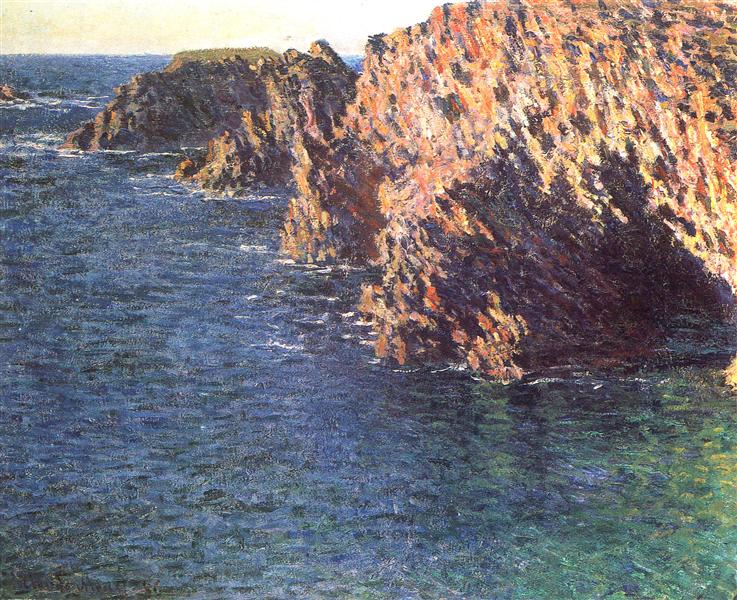Kuvaus
The Grotto at Port-Domois, painted in 1866 by Claude Monet, is a fascinating example of the early development of the Impressionist style that would later characterize his work. In this painting, Monet captures the natural beauty of a coastal grotto in the Normandy region, where light and water play a primary role in the atmosphere of the composition. This work not only reflects Monet's interest in the transient effects of natural light, but also demonstrates his mastery in the use of color and form.
The work presents a landscape dominated by a rocky and marine environment. The grotto, which opens onto the ocean, becomes the focal point of the composition. The stones of the grotto are worked with detailed care, highlighting their rough texture and the irregularity of their contours. This level of detail contrasts with the fluidity of the water drawn in the lower part of the painting, where Monet uses quick, loose brushstrokes that suggest movement, alluding to the waves that break gently against the rocks.
The use of color in this work is remarkable. Monet employs a palette that includes various shades of blue and green, with warm reflections in the shadows and illuminated areas. The light that filters through the grotto becomes an almost tangible element; the way it translates onto the surface of the water, with luminous accents that evoke the ephemeral essence of the moment, is one of the details that shows his innovation. This interest in light and its effect on the environment becomes a defining characteristic of Impressionism.
Unlike some of his later works, there are no visible human characters in The Grotto at Port-Domois, allowing the viewer to become fully immersed in the landscape. This decision can be interpreted as Monet's attempt to focus on the interaction between nature and light, rather than distracting the viewer with the human presence. However, this does not mean that the work is devoid of narrative. The scene represents a moment of stillness and contemplation, inviting the viewer to imagine their own experience in this place.
Monet, in this painting from his youth, was already exploring themes that would become fundamental in his career: the relationship between nature and the viewer, as well as the capture of fleeting moments. Similar to other seascapes in his repertoire, such as "Impression, Sunrise", The Grotto at Port-Domois is a testament to his projection towards a new visual language. Throughout his career, Monet would continue to transform and sophisticate his style, but this work remains an essential link in his artistic evolution.
In short, The Grotto at Port-Domois is an affirmation of Claude Monet's singular vision as an artist. Through his ability to capture the essence of the landscape and the luminous experience of the moment, Monet lays the groundwork for a new way of seeing and representing the world that departed from previous academic traditions. In this work, the grotto is not only a physical space, but also a metaphor for the artist's exploration of the sublime in nature.
KUADROS ©, a famous painting on your wall.
Hand-made oil painting reproductions, with the quality of professional artists and the distinctive seal of KUADROS ©.
Painting reproduction service with satisfaction guarantee. If you are not completely satisfied with the replica of your painting, we will refund 100% of your money.

